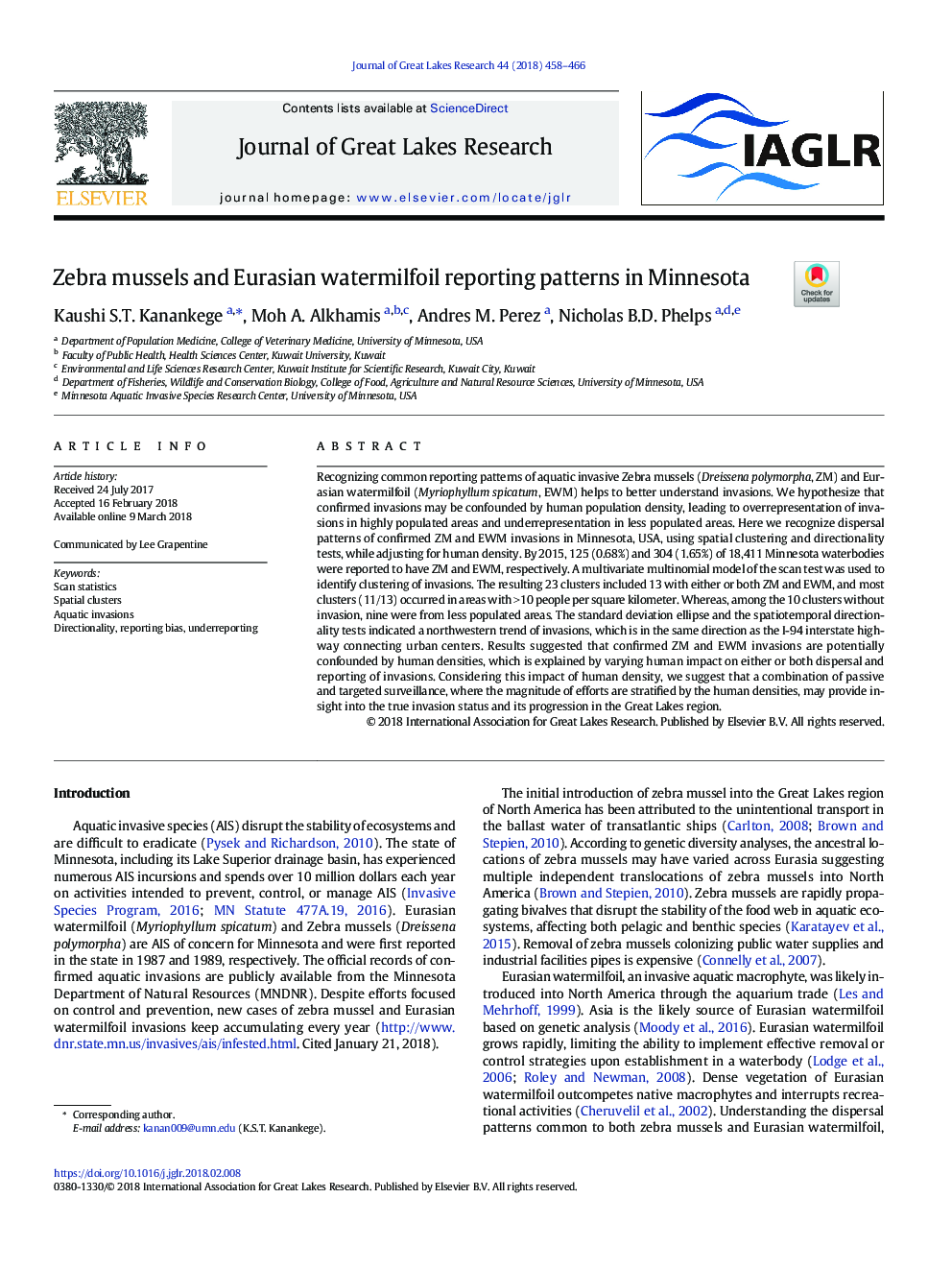| کد مقاله | کد نشریه | سال انتشار | مقاله انگلیسی | نسخه تمام متن |
|---|---|---|---|---|
| 8849110 | 1618515 | 2018 | 9 صفحه PDF | دانلود رایگان |
عنوان انگلیسی مقاله ISI
Zebra mussels and Eurasian watermilfoil reporting patterns in Minnesota
ترجمه فارسی عنوان
صدف گورخر و الگوهای گزارش یخ زده یونانی در مینه سوتا
دانلود مقاله + سفارش ترجمه
دانلود مقاله ISI انگلیسی
رایگان برای ایرانیان
کلمات کلیدی
آمار اسکن، خوشه های فضایی، تهاجمات آبزی، مسیریابی، گزارش تعصب، کم گزارش،
موضوعات مرتبط
مهندسی و علوم پایه
علوم زمین و سیارات
علوم زمین و سیاره ای (عمومی)
چکیده انگلیسی
Recognizing common reporting patterns of aquatic invasive Zebra mussels (Dreissena polymorpha, ZM) and Eurasian watermilfoil (Myriophyllum spicatum, EWM) helps to better understand invasions. We hypothesize that confirmed invasions may be confounded by human population density, leading to overrepresentation of invasions in highly populated areas and underrepresentation in less populated areas. Here we recognize dispersal patterns of confirmed ZM and EWM invasions in Minnesota, USA, using spatial clustering and directionality tests, while adjusting for human density. By 2015, 125 (0.68%) and 304 (1.65%) of 18,411 Minnesota waterbodies were reported to have ZM and EWM, respectively. A multivariate multinomial model of the scan test was used to identify clustering of invasions. The resulting 23 clusters included 13 with either or both ZM and EWM, and most clusters (11/13) occurred in areas with >10 people per square kilometer. Whereas, among the 10 clusters without invasion, nine were from less populated areas. The standard deviation ellipse and the spatiotemporal directionality tests indicated a northwestern trend of invasions, which is in the same direction as the I-94 interstate highway connecting urban centers. Results suggested that confirmed ZM and EWM invasions are potentially confounded by human densities, which is explained by varying human impact on either or both dispersal and reporting of invasions. Considering this impact of human density, we suggest that a combination of passive and targeted surveillance, where the magnitude of efforts are stratified by the human densities, may provide insight into the true invasion status and its progression in the Great Lakes region.
ناشر
Database: Elsevier - ScienceDirect (ساینس دایرکت)
Journal: Journal of Great Lakes Research - Volume 44, Issue 3, June 2018, Pages 458-466
Journal: Journal of Great Lakes Research - Volume 44, Issue 3, June 2018, Pages 458-466
نویسندگان
Kaushi S.T. Kanankege, Moh A. Alkhamis, Andres M. Perez, Nicholas B.D. Phelps,
